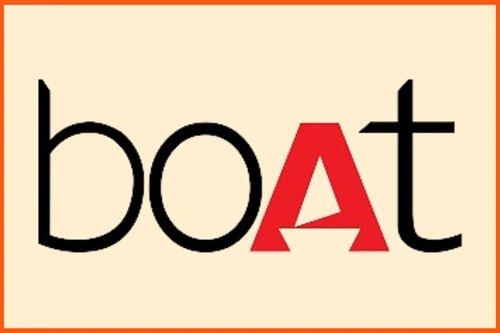What Is Design Thinking?
Design thinking is a human-centric approach to problem-solving that emphasizes creativity, empathy, and iterative experimentation. Originating from the fields of design and engineering, it has evolved into a versatile methodology used across various industries to develop innovative solutions to complex challenges. The core idea of design thinking is to deeply understand users’ needs and experiences and then collaboratively generate, prototype, and test ideas that effectively address those needs.
This process typically involves five stages:
- empathizing with users,
- defining the problem,
- ideating potential solutions,
- prototyping the best ideas and
- testing them in real-world scenarios.
By focusing on the end-user and fostering a culture of experimentation, design thinking encourages out-of-the-box thinking and allows for rapid iteration and refinement of ideas. Whether applied in business, education, healthcare, or technology, design thinking empowers teams to generate solutions that are not only functional but also meaningful and impactful for the people they serve.

A design thinking course equips individuals with the skills to apply this methodology in various contexts, from product development to business strategy. By learning how to empathize with users, generate creative ideas, and rapidly prototype solutions, participants can tackle complex challenges more effectively. The course enhances critical thinking, creativity, and collaborative skills, making individuals more adept at driving innovation in their organizations. Whether you’re in business, education, healthcare, or any other field, a design thinking course empowers you to create impactful, user-centred solutions.
Who can utilize design thinking?
Design thinking is a multifaceted approach that can be utilized by a diverse range of people and professionals across various fields. Originally developed for designers and engineers, it has since been adopted by business leaders, educators, healthcare professionals, and entrepreneurs, among others. Anyone who is involved in solving complex problems, developing innovative products or services, or improving user experiences can benefit from design thinking.
Business managers and teams use design thinking to create customer-centric solutions and drive innovation within their organizations. Educators apply it to develop more engaging and effective teaching methods. Healthcare professionals leverage design thinking to enhance patient care and improve health outcomes. Entrepreneurs use it to identify market opportunities and design products that meet real needs. Even non-profit organizations and social innovators utilize design thinking to address societal problems more impactfully. Ultimately, design thinking is a powerful tool for anyone looking to create meaningful, user-focused solutions in their work.
Essential Components of Design Thinking
The essential components of design thinking are empathy, define, ideate, prototype, and test. These five stages form the backbone of the design thinking process:
- Empathy: This involves deeply understanding the needs, desires, and challenges of the end users. It requires putting oneself in the users’ shoes to gain insights into their experiences and problems.
- Define: In this stage, the insights gathered during the empathy phase are synthesized to clearly define the problem or challenge that needs to be addressed. A well-defined problem statement guides the rest of the process.
- Ideate: This is the brainstorming phase where diverse ideas and potential solutions are generated. Creativity is encouraged, and no idea is off-limits, fostering innovation.
- Prototype: Ideas are turned into tangible prototypes or models. These prototypes are basic versions of the solution that can be quickly developed and tested.
- Test: Prototypes are tested with real users to gather feedback. This stage helps refine the solution, leading to iterations and improvements until the best solution is identified.
These components work together to create innovative, user-centred solutions that effectively address complex challenges.
In Which Industries Are Design Thinking Skills Applicable?
Design thinking skills are applicable across a wide range of industries due to their focus on creativity, user-centered solutions, and innovation.
- In technology, design thinking is used to develop intuitive software, apps, and user interfaces that meet customer needs.
- The healthcare industry leverages design thinking to improve patient experiences, enhance medical devices, and create efficient care processes.
- In education, it helps design more engaging curriculums and learning atmospheres that cater to diverse student needs.
- Retail and consumer goods industries use design thinking to develop goods and services that resonate with customers and improve their shopping experiences.
- Financial services apply it to create customer-friendly banking apps and personalized financial solutions.
- Manufacturing employs design thinking to innovate processes, improve product design, and enhance operational efficiency.
- Even in public services and non-profit organizations, design thinking is valuable for creating solutions that address social challenges, improving public policies, and enhancing community engagement.
Overall, design thinking is a versatile tool that drives innovation and user-focused solutions in virtually any industry.
How design thinking enables teams to produce better results?
Design thinking helps in making better products by prioritizing the needs, experiences, and feedback of users throughout the development process. It begins with empathy, where designers deeply understand the target audience’s challenges and desires. This user-centered approach ensures that products are not just functional but also meaningful and relevant to the people who will use them.
During the ideation phase, design thinking encourages the generation of diverse ideas, fostering creativity and innovation. This leads to the exploration of various solutions, allowing teams to think outside the box and consider multiple approaches to a problem.
The prototyping and testing stages allow for rapid iteration, where ideas are quickly turned into tangible prototypes and tested with real users. Feedback is gathered early and often, enabling continuous improvement and refinement of the product. This iterative process minimizes risks, reduces development time, and ensures that the final product effectively addresses user needs, resulting in a better, more successful product.
Design thinking in product development
Design thinking plays a major role in product development by providing a structured, user-centered approach that contribute to innovation and ensures that the final outcome meets the needs and requirements of its target audience. Here’s how design thinking contributes to product development:
- Understanding User Needs: The process begins with empathy, where designers engage with users to deeply understand their pain points, preferences, and behaviors. This insight ensures that the product development is focused on solving real problems.
- Defining the Problem: Design thinking helps in clearly defining the problem or challenge based on user insights. A well-defined problem statement guides the development process and ensures that the team is aligned on the objectives.
- Ideation: Design thinking encourages brainstorming and the exploration of a wide range of ideas. This phase fosters creativity and innovation, allowing teams to think outside the box and consider multiple potential solutions.
- Prototyping: Ideas are quickly transformed into prototypes, which are basic versions of the product. This allows for rapid experimentation and iteration, helping to refine the product design.
- Testing and Iteration: Prototypes are tested with real users, and their feedback is used to make improvements. This iterative process ensures that the product is continuously refined until it effectively meets user needs.
Overall, design thinking ensures that product development is user-focused, innovative, and responsive to real-world feedback, leading to products that are more successful and impactful.
Design Thinking Careers and Scope
The scope and career prospects of design thinking are broad and increasingly relevant in today’s innovation-driven world. As organizations across industries seek to develop user-centered products and services, the demand for professionals with design thinking skills is on the rise. Design thinking is applicable in various fields, including technology, healthcare, education, finance, retail, and even public policy. Professionals who master design thinking can pursue roles such as product designers, UX/UI designers, innovation consultants, business strategists, and project managers.
A design thinking certification course can significantly uplift one’s career by equipping them with a structured approach to problem-solving that is highly valued by employers. It enhances creativity, critical thinking, and empathy—skills that are essential for developing solutions that truly resonate with users. The certification also signals to employers that the individual is capable of leading innovation efforts and driving business growth through user-centred design.
Additionally, a design thinking certification can open doors to leadership roles, as it demonstrates an ability to think strategically and innovate effectively. Whether you’re looking to improve your current position at work, switch careers, or start your own business, mastering design thinking can provide a competitive edge and significantly boost your career prospects.

